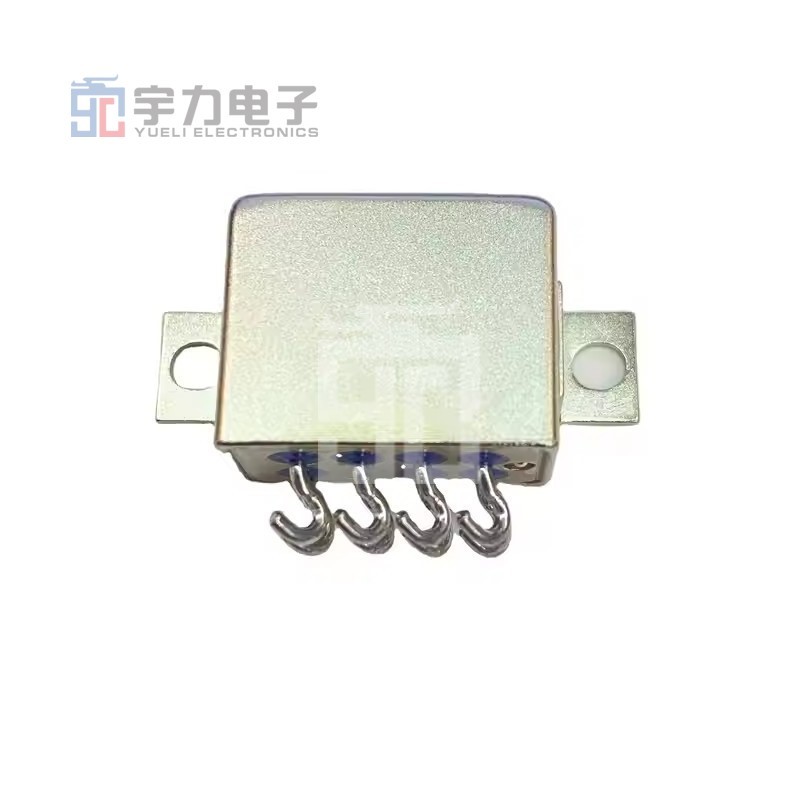Understanding High Power Relays: Essential Components for Efficient Electronic Systems
2025-07-25

High power relays are specialized electromagnetic switches designed to control large electrical loads with minimal input power. These components play a crucial role in various applications, ranging from industrial automation to automotive systems and renewable energy installations. Understanding their operation and characteristics is vital for professionals involved in the design and integration of electronic systems.
At their core, high power relays consist of an electromagnetic coil and one or more sets of contacts. When electrical current passes through the coil, it generates a magnetic field that pulls the contacts together, allowing current to flow through the load. This mechanism enables the relay to control high voltage and high current devices while isolating the control circuit from the load, thereby enhancing safety and reliability.
One of the primary advantages of high power relays is their ability to manage substantial electrical loads. They are designed to handle current ratings that can exceed several hundred amps, making them ideal for applications such as motor control, lighting systems, and industrial machinery. Additionally, high power relays often feature a robust construction that can withstand harsh environments, ensuring longevity and consistent performance.
Another critical aspect to consider when working with high power relays is their switching speed. While most relays operate relatively quickly, high power relays may have slower switching times due to the inertia of larger moving parts and the need for reliable contact closure. This factor is essential in applications where timing is critical, and professionals should evaluate the specific requirements of their systems to ensure optimal relay selection.
Heat management is also a significant consideration when utilizing high power relays. As these devices handle large currents, they can generate considerable heat, which may affect their performance and lifespan. Implementing proper heat dissipation techniques, such as utilizing heat sinks or ensuring adequate airflow, can mitigate this risk and enhance relay reliability.
Furthermore, professionals should be aware of the various types of high power relays available, including electromechanical and solid-state options. Electromechanical relays are traditional devices that use moving parts, while solid-state relays rely on electronic components to control the load without mechanical movement. Each type has its advantages and disadvantages, and the choice between them depends on the specific application and performance requirements.
In conclusion, high power relays are indispensable components in electronic systems that require efficient control of high voltage and current loads. By understanding their operation, advantages, and considerations for use, professionals can make informed decisions when integrating these relays into their designs, ensuring safety, reliability, and efficiency in their applications.
At their core, high power relays consist of an electromagnetic coil and one or more sets of contacts. When electrical current passes through the coil, it generates a magnetic field that pulls the contacts together, allowing current to flow through the load. This mechanism enables the relay to control high voltage and high current devices while isolating the control circuit from the load, thereby enhancing safety and reliability.
One of the primary advantages of high power relays is their ability to manage substantial electrical loads. They are designed to handle current ratings that can exceed several hundred amps, making them ideal for applications such as motor control, lighting systems, and industrial machinery. Additionally, high power relays often feature a robust construction that can withstand harsh environments, ensuring longevity and consistent performance.
Another critical aspect to consider when working with high power relays is their switching speed. While most relays operate relatively quickly, high power relays may have slower switching times due to the inertia of larger moving parts and the need for reliable contact closure. This factor is essential in applications where timing is critical, and professionals should evaluate the specific requirements of their systems to ensure optimal relay selection.
Heat management is also a significant consideration when utilizing high power relays. As these devices handle large currents, they can generate considerable heat, which may affect their performance and lifespan. Implementing proper heat dissipation techniques, such as utilizing heat sinks or ensuring adequate airflow, can mitigate this risk and enhance relay reliability.
Furthermore, professionals should be aware of the various types of high power relays available, including electromechanical and solid-state options. Electromechanical relays are traditional devices that use moving parts, while solid-state relays rely on electronic components to control the load without mechanical movement. Each type has its advantages and disadvantages, and the choice between them depends on the specific application and performance requirements.
In conclusion, high power relays are indispensable components in electronic systems that require efficient control of high voltage and current loads. By understanding their operation, advantages, and considerations for use, professionals can make informed decisions when integrating these relays into their designs, ensuring safety, reliability, and efficiency in their applications.


